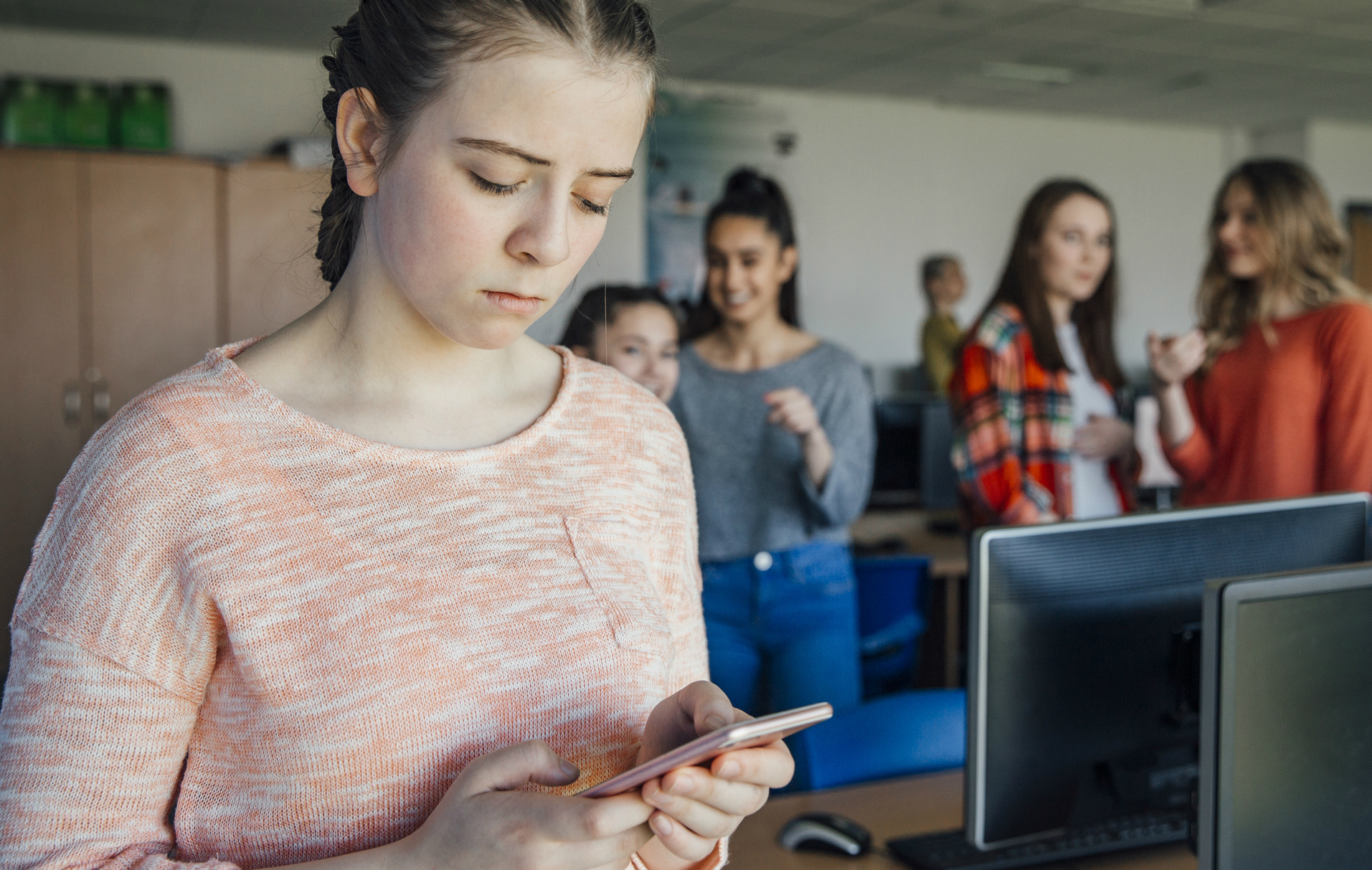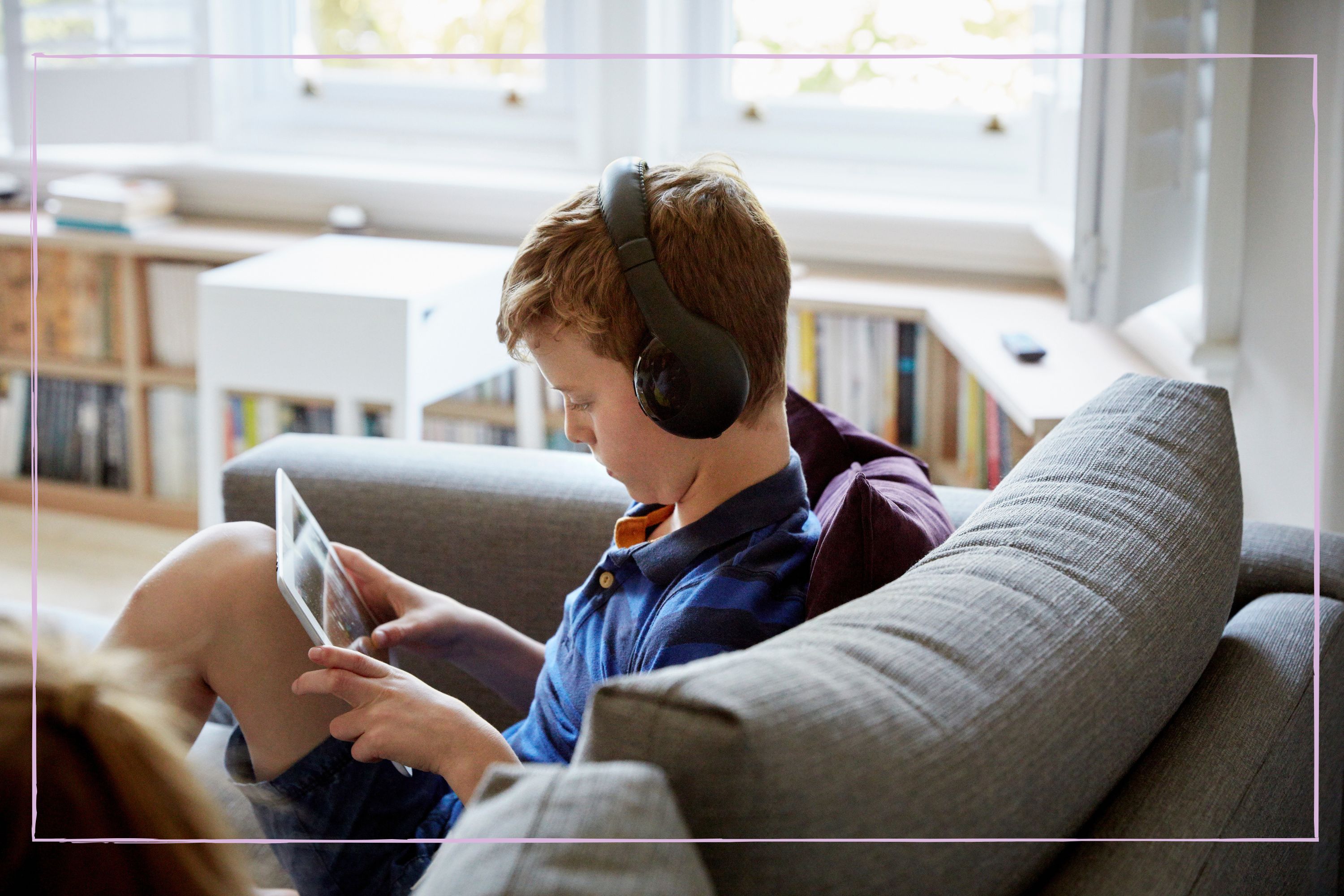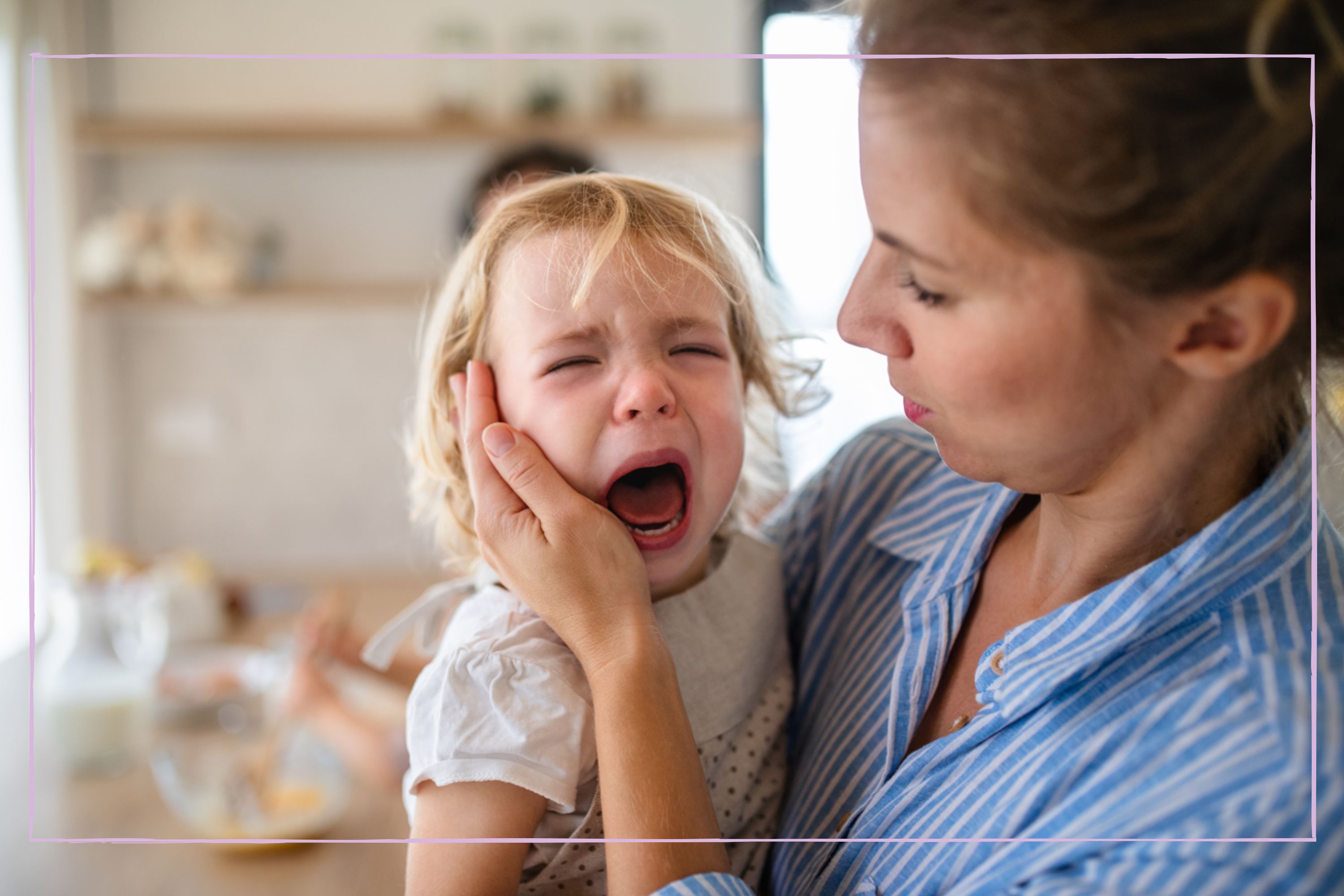12 tips for keeping your kids safe on social media (and #6 is a game changer)
From sharing too much to opening underage accounts on social media, get advice on the top concerns parents have about young people using social.

Selina Maycock
Keeping kids safe on social media is at the forefront of nearly every parent's mind these days. Social media is fake and intrusive and can impact kids in ways we can only imagine in some cases.
Social media was first born in 1997 but it really blew up in the early noughties with the widespread popularity of Myspace, Friendster and then the huge giant Facebook.
We published a helpful piece on is Facebook safe for kids recently and spoke with Privacy advocate Lauren Hendry Parson who told us how her company's research into social media dangers revealed Facebook as one of the worst social media platforms for kids. “From graphic, violent, and disturbing imagery to cyberbullying and sexually suggestive material, 16% of these unwanted interactions have occurred on Facebook, one of the worst platforms from our study.” So, we know that social media can be a dangerous place for kids, we also covered how it can take just 10 minutes for a child to access unsafe content, where we spoke with Kate Edwards, Associate Head for Child Safety at the NSPCC, who shared ways parents can help drive down the risks, "Young people are telling us that avoiding a virtual world is almost impossible, so we must begin to have open conversations with them and build trust between family members to engender these discussions. Part of being able to do this involves adults understanding more about the online world, and how to keep their children safe, which is why we’ve been working with Vodafone to create a toolkit that enables parents to know where to begin in keeping their children safe when entering into the virtual space.”
With the majority of our kids being more tech-savvy than we are, it can feel like we'll never be able to keep up with what they're up to. We asked the experts for help and easy ways parents can keep their kids safe on social media. And here's what they said...
12 tips for keeping your kids safe on social media
1. Talk about how they use social media
Talk to your kids about social media before they start using it. Share your experiences and listen to their thoughts and concerns. This sets the stage for open communication.
As soon as a teenager or child gets a phone, it seems like they're permanently attached to it. (We can't pretend we're not slightly guilty of that too). But it rarely seems like they ever talk on it, so what on earth are they doing? So the starting point for any parent who is concerned about how to reduce their child's screen time is to ask your child what they use social media for. That way you can talk about the potential risks for each platform, and issues that might arise in those spaces.
2. Only accept friend requests from friends they know IRL (in real life)
Involve your kids in setting boundaries for social media use. Discuss acceptable behaviours, time limits, and what to share or keep private. When kids have a say, they’re more likely to follow the rules.
It is far easier to set up anonymous or multiple accounts on Twitter than on Facebook, but that doesn't stop someone from pretending to be who they say they are (and who you think they are). Often accounts can be 'catfished' - a process by which an imposter pretends to be another person to trick someone into liking them, forging a friendship and even meeting up. To do this they often clone the profile of someone else, i.e. a friend, a celebrity or someone with a higher status who would appeal to the victim. Fake photos are often used along with duplicate personal details that have been copied from another profile.
GoodtoKnow Newsletter
Parenting advice, hot topics, best buys and family finance tips delivered straight to your inbox.
It's also common for strangers to pretend to be a child's friend who has set up another profile using fake excuses like they got 'locked out of' their other account or that they wanted a new profile with just a select number of friends. The profiles can look convincing, especially if the same profile images are used. Advise your child to only accept friendship requests in person, and to not accept new requests from someone who might also be listed an an online friend.
On X platform make sure they know how to block other users who they don't want following their tweets. X has a comprehensive guide for parents.
3. Keep their page and profile private
Teach your children about privacy settings and the importance of keeping personal information private. Show them how to use these settings to control who sees their posts and profile.
Help your child set up their social media account so you can discuss the privacy settings as you go. Make sure their pictures can only be seen by their 'friends' on Facebook, and that they never accept the friendship of someone they haven't met in person. Set up your own account - even if you don't want to use it - so you can fully understand how it works and how to better ensure your children stay safe online.
Share the story of an American teacher who wanted to show her class how quickly a picture could spread online. Within a few weeks, the picture was seen by nearly one million Facebook users. Ask your kids to think about that every time they post a picture - 'Would they be happy for a million people, including their parents, to see it?'
4. Teach them how to block bullies and report harmful content
Teach your children how to block people and report things they find upsetting and make sure you sit down with your children and go through the Facebook checklist to keep them safe.
As with any form of bullying, it's important to let your children know they can talk to you about cyberbullying. If they don't want to, encourage them to contact a bullying charity like BullyingUK. Don't ban them from using their phone or computer. This might make your child feel more isolated and the internet is a great way for them to find help. Tell your child not to reply to any nasty messages, however tempting. A bully is likely to be looking for a response, so make sure they don't get the satisfaction.
5. Limit location sharing (and advise against geo-tagging photos)
Location sharing does exactly what it says - shares your location. This can be harmful for a variety of reasons - a family holiday snap posted with a geo-location tag (displaying the geographical location) could alert burglars/strangers that your home is empty. An innocent post of your child's dinner with a geo-tag could pinpoint exactly where they live or what school or college your child goes to. This can put a child at greater risk of being stalked, as a stranger can work out their whereabouts.
6. Discuss risks of over sharing
Explain why oversharing can be dangerous. Help your children understand that once something is posted online, it can be difficult to remove and can be seen by unintended audiences. The alarming trend for children to send each other semi-naked or provocative pictures of themselves and sexually explicit text messages can have devastating consequences especially if the pictures or messages get into the wrong hands or go viral - with the whole world seeing and sharing the content.
Most of the posts on Twitter are public, so there's a danger of your kids giving out personal information by mistake and preventing them from being able to stay safe online. Try to make your children understand that even though you can delete tweets, it only takes a second for someone to retweet their message and then there's no getting it back.
Twitter is quick and easy to use and its simplicity has led to lots of hot-headed celebrities and politicians saying things they've later come to regret. If adults have trouble thinking before they tweet, imagine the trouble kids can get themselves into!
Parents are also being warned of new confusing teen slang 'sexting codes', which are being used by teenagers to hide the true nature of their conversations from their parents. These codes use anagrams, mixing letters and numbers to ask sexual requests or show sexual availability.
7. Educate them on the risks and dangers
Help your kids develop a critical eye. Discuss the difference between real and fake information, and why it’s important not to believe everything they see online. All children are going to do things on the spur of the moment that they may regret later, so talk to them about how huge the fallout from a bad decision like this could be. They may trust someone not to show those pictures or texts to anyone else, but phones get lost and pinched and it would only take a few minutes for their reputation to be shattered.
Be aware that these sexting 'codes' are being used by young people and watch out if you see these particular ones being used by your teenager. Just having the knowledge that these codes exist and understanding what they mean gives you an insight and into helping your child stay safe online.
Sexting codes to be aware of:
- IWS/N: I want sex/ I want sex now
- GNOC: Get naked on camera
- CU46: See you for sex
- GYPO: Get your pants off
- 9/ Code 9: Parents watching
- PIR: Parent in room
- POS: Parent over shoulder
- PAL: Parents are listening
- LMIRL: Let's meet in real life
- GNOC: Get naked on cam
- LH6: Let's have sex
- 8: Oral sex
- SUGARPIC: Suggestive or erotic photograph
- J/O: Jerking off
- RU/18: Are you over 18?
- S2R: Send to receive
- 459: I love you
8. Follow age limit guidelines
The age range on apps, which is often supplied on the information before you choose to download, is only provided by the company that designed the app, it's not overseen by an external body. So your children may be downloading apps which aren't age appropriate.
If your children are using your phone or tablet, they may well stray from the game they are playing onto other areas of your device that you don't want them accessing. Make sure your kids don't have your password which might allow them to spend money while they are in an app. Better still, check out the policy of in-app purchases before you download the game. This information will be available for you at the app store. You can turn off in-app purchases and on some phones it's even possible to completely block them - check the settings on the phone to do this. Most social media platforms are 13+.
9. Set some ground rules / limits on usage
If you have a child who's particularly keen on technology and surfing the web, it might be a good idea to put in place some time limits for their usage. It's very rare, but some children's online life can take over their real one, and this can lead to all sorts of problems. Kids sitting up in bed 'til the small hours is also going to leave them tired and grumpy.
It's likely that you're the one who's bought the phone/tablet/laptop etc so you'll have a chance to set some parental controls on it before you give it to them. The user manual should tell you how to do this. It's also worth searching online for other parents' tips for that particular device.

Remember, gaming devices have Internet access, so make sure you set parental controls on them too. As well as setting controls on the devices, make sure you've set them through your service provider (BT, Sky, Talk Talk, Virgin Media etc.) too.
Keeping all devices out of the kids' bedrooms, especially after they've gone to bed is a good idea. You could also set time limits for games consoles and apps. thinkuknow website has some really useful advice on how to speak to your children about websites they should and shouldn't visit.
Ultimately create a safe space for mistakes - these kids are learning. Let your kids know they can come to you if they make a mistake or encounter something scary online. Assure them they won’t be punished, but that you’ll help them navigate and learn from the situation.
Three things to bear in mind with family agreements
- Content rules - Images and videos that your children can and can not view on Instagram (e.g. inappropriate images or videos)
- Time rules - Implement windows of time in which your children can use their devices (e.g. no use of devices an hour before waking up or an hour before going to sleep)
- Context rules - Set out places and situations in which phones are banned altogether (e.g. during family meal times or special occasions, in the car)
10. Check their privacy settings
Schedule regular check-ins to discuss your kids' social media use. Ask about their experiences, what they enjoy, and if they’ve encountered anything troubling and take time to check their privacy settings regularly. Setting up apps like Google Family Link, allow you to approve or block apps your child wants to download. For any apps that are downloaded, review the privacy settings to make sure they are in control of how their information is used, who can see their account and what they share.
11. Help them choose strong passwords / authentication
- Use a password manager on a browser. Internet browsers like Google Chrome or Safari will offer to save passwords for you. You can fill in passwords on a signed-in profile and these will stay protected and ready to access when you open your chosen browser. But be careful not to store passwords on a shared computer, or make sure you have password protection on your profile on said computer.
- Password manager Apps. There are many free and paid password manager apps that can create and hold all of your passwords in a secure app. This can come with extra security if you have two-factor verification settings and basic security on your phone such as face-verification.
- Memorable passwords. Everyone's heard of using birthdays, first pet names or even mother's maiden name to create a password. However, your best bet for remembering a password that also cannot be guessed easily by hackers is to use a phrase within your password that is completely unique to you. This shouldn't be a birthday or a pet, as this is potentially easy access information for hackers, especially if you are on social media. You want a phrase that will jog your memory if you ever lose a password, unique school nicknames or something personal to you is always a good start. This phrase should be combined with more words and numbers / symbols to create a really strong password, that you hopefully don't forget.
- Old fashioned method. Be sure to save your private key both offline and digitally. Ironically, the most secure method against hackers is the good old fashioned pen and paper method. Even Russia's state security supposedly reverted to typewriters after leaks.
- Strong and unique password. Weak passwords can leave you vulnerable to attacks and hacks. Whilst the decentralised nature of blockchain technology makes it secure, any chain is only as strong as its weakest link. Combine letters, numbers and symbols and have at least 12 characters. Use a combination of upper and lower case characters. As an example Myname123$ would still only take a hacker around five minutes to crack. By adding a symbol in the middle of a password you automatically increase hack time by around three days.
12. Consider parental controls that monitor activity
Take advantage of parental control tools available on social media platforms and devices. These can help you set appropriate boundaries and monitor activity. In a 2023 survey conducted by YoungMinds, it was reported that 34 per cent of young people wanted to leave social media weekly but felt unable to do so. It also showed more than a fifth (22 per cent) are shown distressing content, based on their browsing history, at least once a week. Meanwhile, The Royal Society for Public Health found that using Snapchat, Facebook, Twitter and Instagram led to increased feelings of depression, anxiety, poor body image and loneliness among 14-24-year-olds.
There are some great activity monitoring tools available that allow you to see which sites your kids are visiting, what they're searching for, and who they're talking to via instant messaging.
It may feel a little Big Brother, we know, but it can also act as a deterrent if your kids know you have access to what they're looking at. It also means that should you see something you don't like the look of, you can have that conversation with them straight away. For instance, KidLogger allows you to monitor your kids' activity from your mobile phone.
In other family news, here are 15 'life-saving' questions to ask your child if they’re online gaming - plus 5 expert tips for keeping your kids safe and did you know that screens aren't the only reason kids aren't playing outdoors.
Stephanie has been a journalist since 2008, she is a true dynamo in the world of women's lifestyle and family content. From child development and psychology to delicious recipes, interior inspiration, and fun-packed kids' activities, she covers it all with flair. Whether it's the emotional journey of matrescence, the mental juggling act of being the default parent, or breaking the cycle of parenting patterns, Stephanie knows it inside out backed by her studies in child psychology. Stephanie lives in Kent with her husband and son, Ted. Just keeping on top of school emails/fundraisers/non-uniform days/packed lunches is her second full-time job.
- Selina MaycockSenior Family Writer
-
 The 'incredibly helpful' 30-second rule – liked by nearly 2 million people – that your kid needs to know about
The 'incredibly helpful' 30-second rule – liked by nearly 2 million people – that your kid needs to know aboutThis useful piece of advice is worth remembering for all of us, not just our children
By Adam England Published
-
 What is ‘sturdy parenting’? Child psychologist Dr Becky explains the benefits of this technique
What is ‘sturdy parenting’? Child psychologist Dr Becky explains the benefits of this techniqueIf you're at a loss when it comes to disciplining your kids, sturdy parenting might help - and it's approved by child psychologist Dr Becky.
By Ellie Hutchings Published
-
 3 tips to set screen time boundaries from parenting experts Dr Becky Kennedy and Professor Emily Oster - and #1 is an important reminder
3 tips to set screen time boundaries from parenting experts Dr Becky Kennedy and Professor Emily Oster - and #1 is an important reminderStruggling to set screen time boundaries with your kids? Parenting experts Dr Becky Kennedy and Professor Emily Oster have shared three top tips.
By Ellie Hutchings Published
-
 Could 'lazy parenting' be the next big thing? 2 psychologists share why it can be beneficial for development, but not everyone agrees
Could 'lazy parenting' be the next big thing? 2 psychologists share why it can be beneficial for development, but not everyone agrees'We need more lazy parents' and here's why, according to two child psychologists
By Ellie Hutchings Published
-
 Parents, do you know what H.E.L.P. stands for? Psychologists swear by this acronym to navigate those tough parenting moments we all face
Parents, do you know what H.E.L.P. stands for? Psychologists swear by this acronym to navigate those tough parenting moments we all faceRemember: Halt, Empathy, Limits, Proximity...
By Ellie Hutchings Published
-
 Sticker charts 'don't work in the long run' says psychotherapist - try these 8 tips to teach kids intrinsic motivation instead
Sticker charts 'don't work in the long run' says psychotherapist - try these 8 tips to teach kids intrinsic motivation insteadOne expert has explained eight things you can do as a parent to help your child develop intrinsic motivation - and it means abandoning the sticker chart.
By Ellie Hutchings Published
-
 Reflective parenting could help your teenager manage their big emotions, new research shows - here are 5 steps to try
Reflective parenting could help your teenager manage their big emotions, new research shows - here are 5 steps to tryThe teenage years are tough for everyone involved. But research has suggested that an approach known as 'reflective parenting' can be the key to reconnecting.
By Ellie Hutchings Published
-
 These 5 'game changing' phrases can teach your children about the mental load, according to a psychologist - and it could set them in good stead for adulthood
These 5 'game changing' phrases can teach your children about the mental load, according to a psychologist - and it could set them in good stead for adulthood"Change at home can change society"
By Ellie Hutchings Published